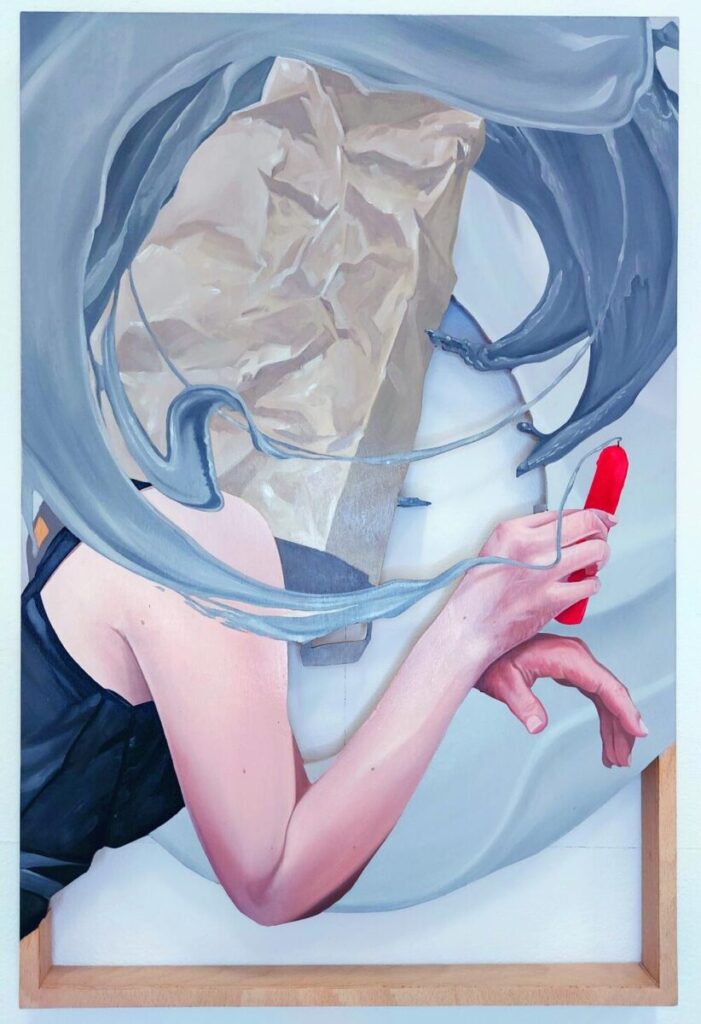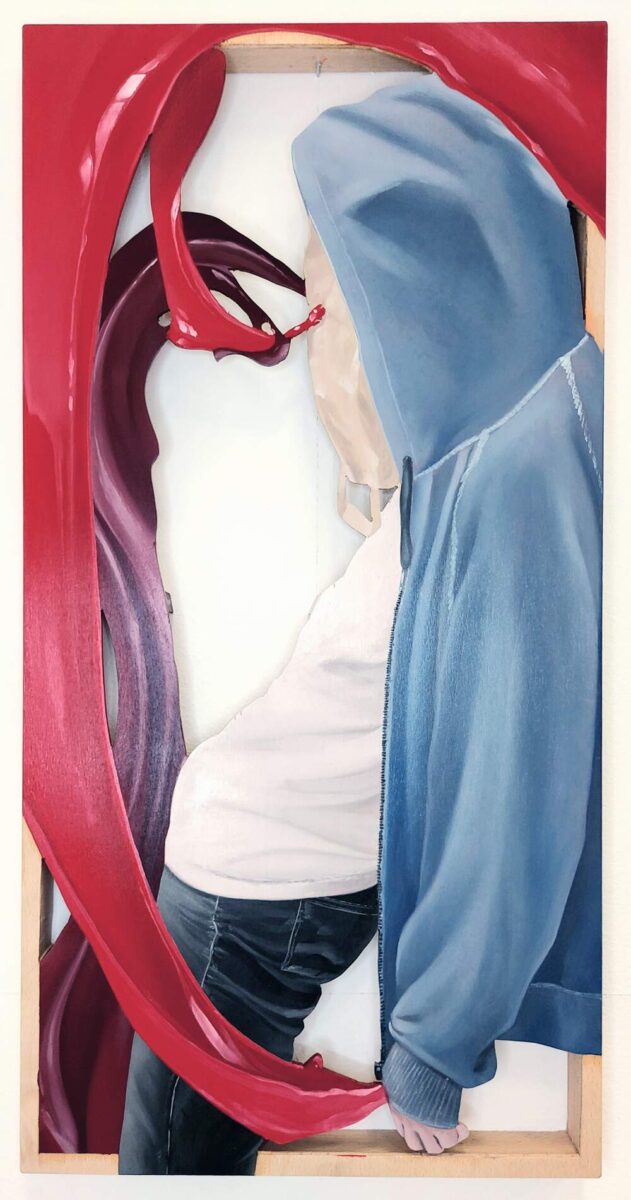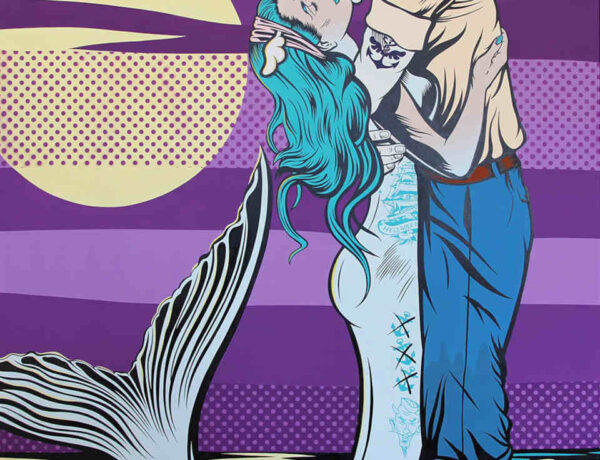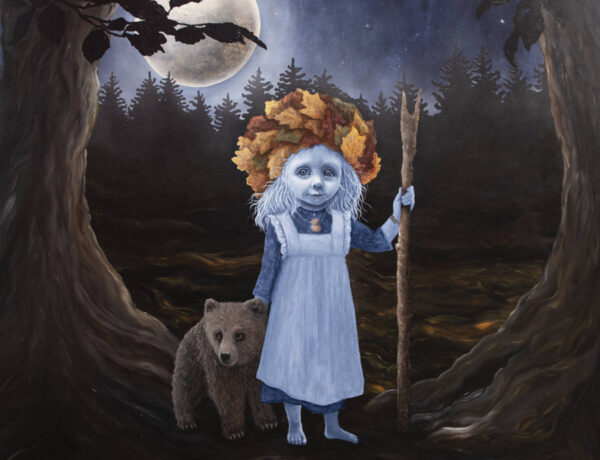Meet Christian Boehmer, a self-taught artist born in the idyllic village of Bad Kreuznach near Frankfurt, Germany, in 1984. His artistic voyage began in the serene landscapes of his rural upbringing, where he painted the beauty of nature. Inspired by the likes of Claude Monet and contemporary graffiti pioneers, Boehmer’s fusion of traditional and modern influences defines his artistic signature.
Christian Boehmer’s studio, a repurposed US Army squash court nestled within a cultural and dance centre, serves as his sanctuary for experimentation. His distinctive approach combines oil painting with wooden cutouts, a method born from meticulous model photo shoots and digital finesse. The eloquent synergy of oil painting and wooden textures allows Christian Boehmer to craft his intricate narratives, meticulously carved and painted to life. His affinity for dynamic movements is reflected in collaborations with dancers, enriching his work with energy and vitality.
Anything is possible.
cHRISTIAN BOEHMER
Themes of unity and fluidity echo through Christian Boehmer’s portfolio, while his depiction of birds in flight symbolises both motion and the yearning for freedom. The recurring motif of a paper bag signifies anonymity’s impact in a world often consumed by appearances. For Christian Boehmer, it represents a challenge to perceive beyond the veneer, to dive into the depths of character and soul.
His goal for the year ahead remains simple yet profound: to immerse himself in art in every conceivable way, adding new chapters to his vibrant narrative. With each brushstroke, each splash of colour, Christian Boehmer continues to weave this distinctive story, bridging the worlds of tradition and modernity, urban and rural, inviting us to journey alongside him into the captivating realm of urban contemporary art.
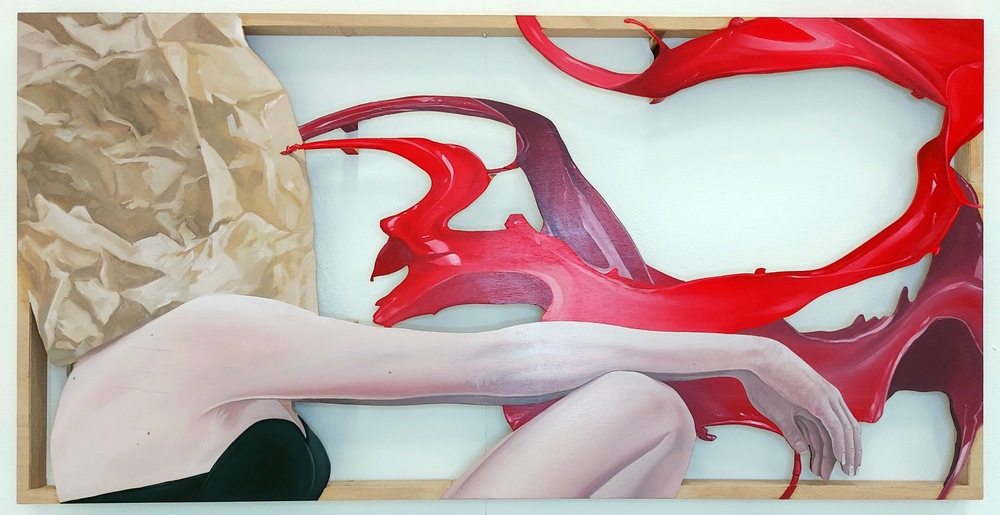
Hi Christian, please introduce yourself to our readers.
Hi there! I´m Christian Boehmer. Born 1984 in Bad Kreuznach, a small village near Frankfurt, Germany. I´m a self-taught artist of the graffiti and urban contemporary art genre.
What was your first introduction to art?
I’ve loved and done art since I was a very young child. As I grew up in the countryside, surrounded by beautiful woods and a small castle ruin, my first introduction to art was to paint the landscapes surrounding me. I saw a huge Claude Monet exhibition in Frankfurt at these times, which was very influential and was the moment I realised what is possible regarding colour schemes.
Who have been some of your creative heroes?
Claude Monet, Gustav Klimt, Alphonse Mucha, and Egon Schiele in the early years. Later, when I began painting graffiti, there were Daim, Loomit, Bates, Swet, Dare, Hera….
How would you describe the urban contemporary art culture in Germany?
Good question. On the one hand, it is a very rich culture with hundreds of brilliant artists and endless possibilities. But as there is so much everywhere, it becomes a thin line to get overdosed and bored by more irrelevant stuff.
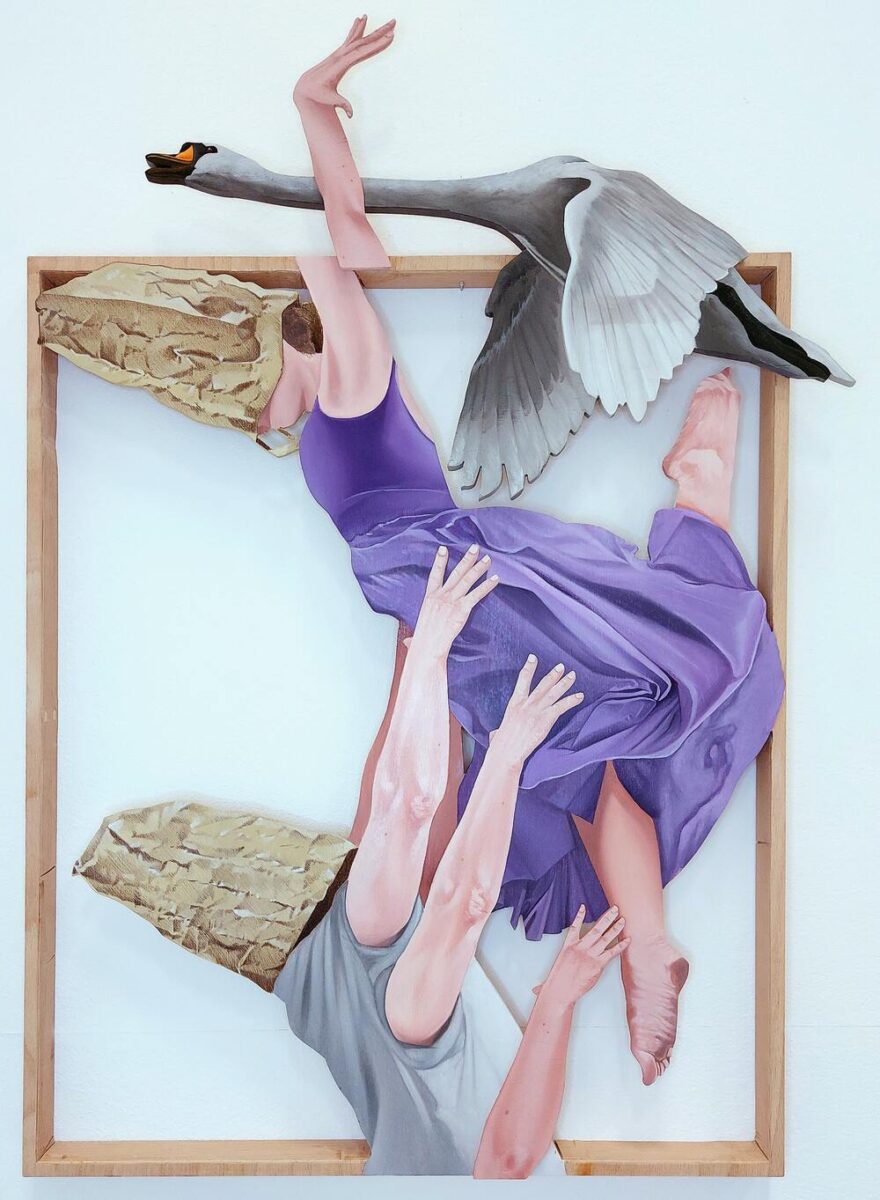
Where do you feel most at home?
Figurative painting is my comfort zone. I also feel very familiar with painting hands and dynamic compositions.
What inspired you to create mixed-media art by combining wooden cutouts with traditional oil paintings?
Oh, this was less a spontaneous inspiration but a long-term journey. I was searching for the perfect media to create the highest quality realistic painting, and it was the logical solution to use oil painting after endless months of trial and error with acrylic, watercolour, and charcoal. I am very bad at painting great backgrounds. So, after another period of trial and error, I decided to go with the most radical idea and cut the backgrounds out. Wood is just the best material to combine both.
Can you explain the steps involved in constructing one of your mixed-media works?
First step is to do model photo shoots here and there to create a basis for my conceptual ideas. Whenever I need some fresh ideas, I scroll through my stock of these photos and get inspired. The composition for a new artwork is put together in Photoshop and then transferred to the wooden layers before it gets cut out.

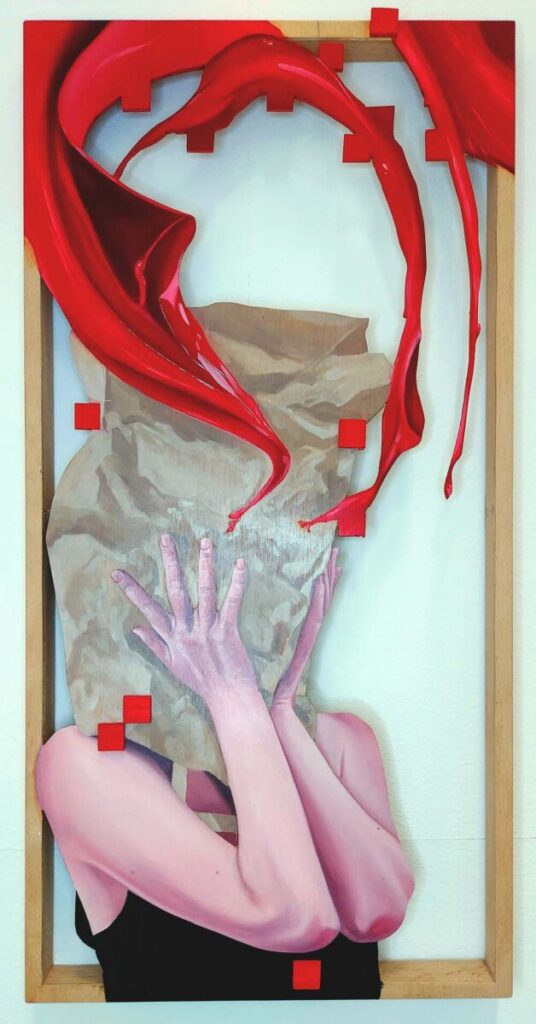
As I grew up in the countryside, surrounded by beautiful woods and a small castle ruin, my first introduction to art was to paint the landscapes surrounding me.
Christian Boehmer
What do you think is the main thing creating art has taught you?
Anything is possible.
Does painting a large-scale mural present unique challenges or differences compared to your other work?
Of course it does. The main difference is not to get lost in every single detail. You can paint in a more “dirty” way, as no one will see little mistakes. But this can also be a challenge. Which parts can be left away or painted more simply but still keep the main message and dynamic of the composition? And you need to paint fast, as in most cases, you will have your lift only for a few days until you need to be done.
How do you scout buildings for your murals?
I never did. Mural paintings always find me and I build up my creative idea and composition by referring to the space I get.
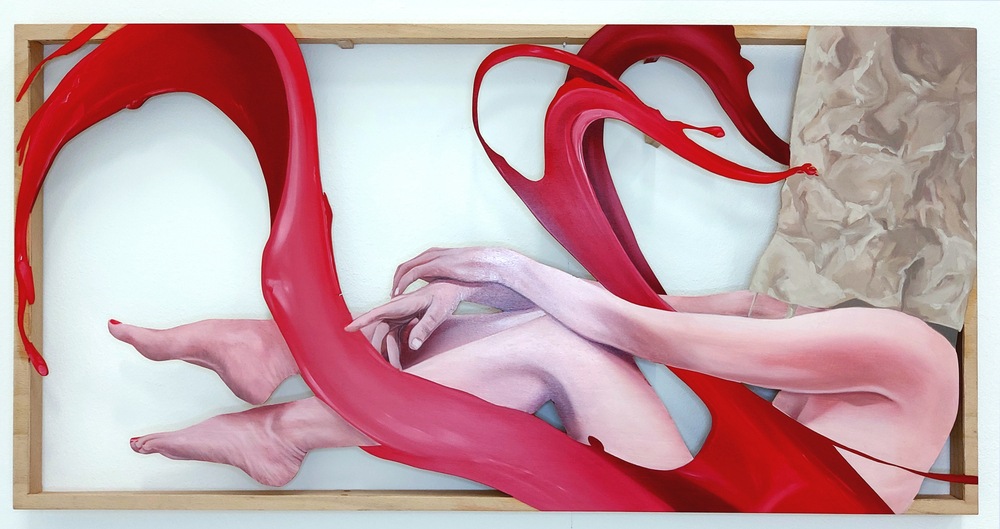
What have been some of your favourite collaborations with fellow artists?
I am always happy to do collaborative work with friends. So it is not your task to just finish the work, but most of your time you spend having a good time and enjoy the vibe together.
A few years ago, you exhibited an installation work in New York City. What was this experience like?
It was my first exhibition in NYC and the first time I was there and it was just unreal. It took me some time to realise it really happened. I look forward to showing some of my artwork again when there is another possibility.
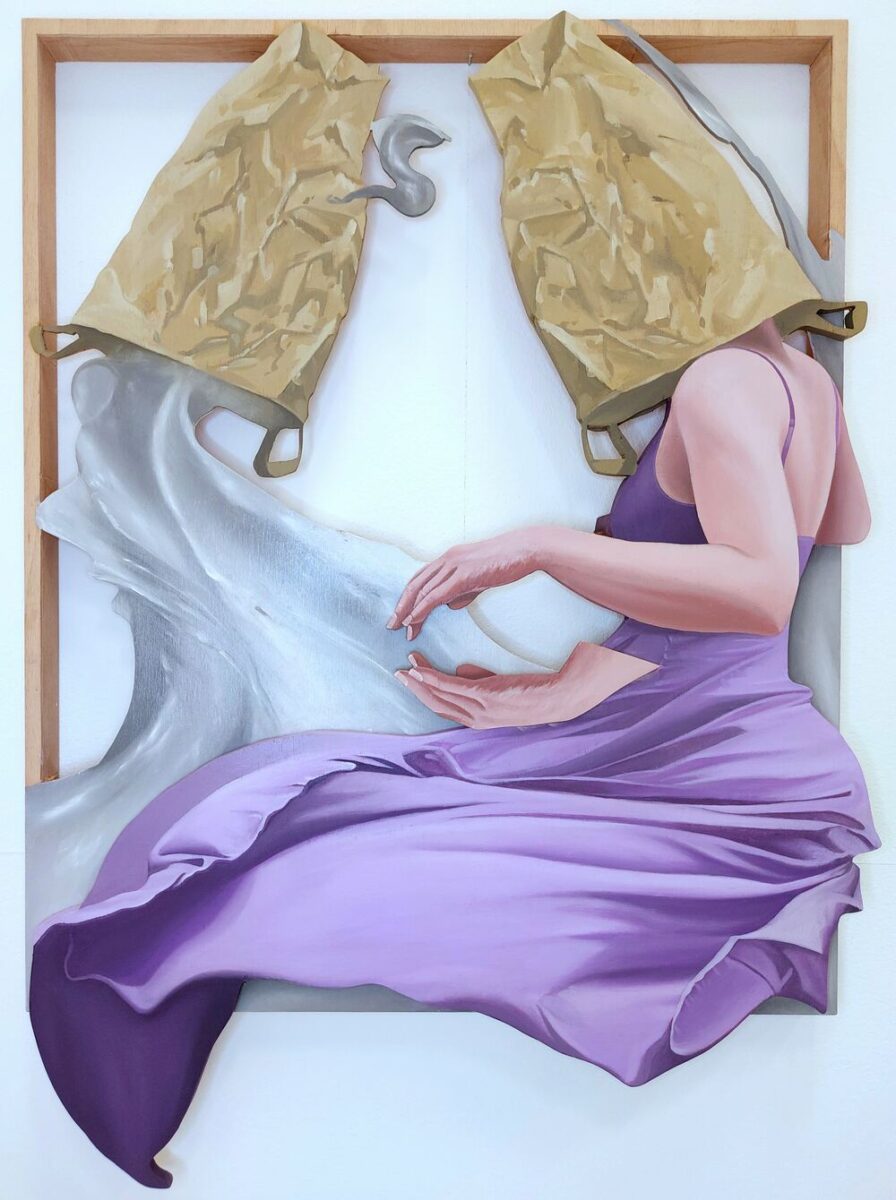
What is the story behind the title of your work: “but in the end, there will just be silence again”?
I was invited to do a mural painting in Tbilisi, Georgia, at the end of 2021. A few months later, and just some weeks before the painting was scheduled, the Russian invasion of Ukraine occurred. And especially Georgia has its very own history of Russian invasions, it was clear to me to paint a mural that shows the symbolised cruelty of war but also a symbol of hope and peace. The artwork “but in the end, there will just be silence again” was the mural painting, transferred to an artwork of oil on cut-out wood. The title should be a warning never to forget what happens right now in front of our eyes.
Fluidity and union are a big part of your work. Does dance influence your artistry?
Haha, that´s very well-observed. As I said, all of my paintings are based on photoshoots. Most of these were done in collaboration with professional dancers. Also, my studio is in a huge breakdance/contemporary dance centre.
What do you think draws you to painting birds in flight?
I love the dynamic and the symbolism of freedom.
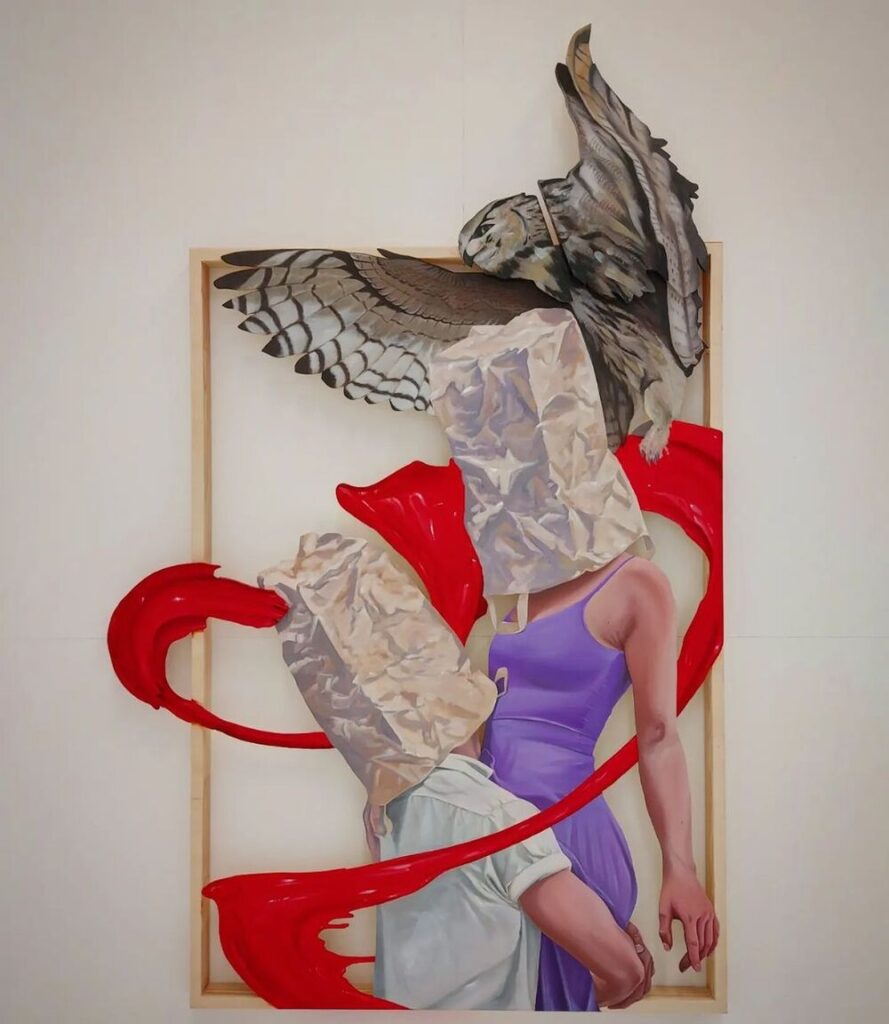
The paper bag is at the heart of your work. What does it represent to you?
First of all, it has to do with anonymity and reservation. It is critical to our contemporary world and society, where so many people are not driven by empathy, charity and reservation but by narcissism, egoism, and beauty delusion. I do not need to paint an absolutely perfect and beautiful face to create an image of people’s souls and their characters.
Are you experimenting with anything new? Is there anything you want to try?
I just started to explore the possibilities of AI-generated photos instead of shoots on my own. It’s very interesting to find out these new possibilities and use them for my own ideas just as an adaption of what I usually do.
I do not need to paint an absolutely perfect and beautiful face to create an image of people’s souls and their characters.
Christian Boehmer
Describe your studio.
It is huge, as it´s a former squash court from the US Army, implemented in a centre for culture and dance. I just love being there.
What are your goals for the remainder of the year?
Do art in any way possible!


